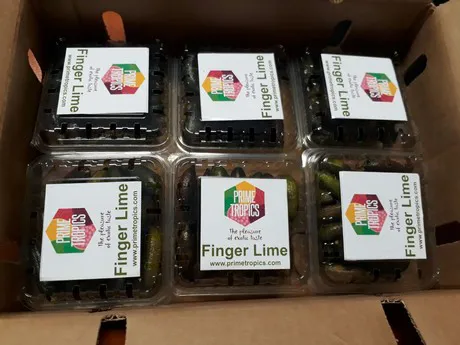November proved to be an interesting month industry-wide. It included trade deals bringing produce to new, previously inaccessible places and a good outlook for deciduous fruit in South Africa, Peru and the US, which also saw a new apple variety hit store shelves. During the month, threats to the banana industry as a whole were also brought to light, as well as solutions to solve them.
Positive outlook for apples and grapes
Apple growers across the United States
reported bumper crops in November. “I’ve never seen such a load of fruit,” said Art Soons, 84, co-owner of Soons Orchards in New Hampton, New Hampshire. “Last year, Mother Nature gave us a half-crop, and this year she gave us a crop and a half.”
Soons wasn't the only grower with the word bumper crop slipping off his tongue though, Steve Clarke at Prospect Hill Orchards in Milton, New York told that he had never seen a larger crop either in his 50 years growing.
Okanagan Specialty Fruit's Arctic apple
Bumper crops weren't the only thing getting growers excited in November however,
as a new variety entered store shelves across the United States. The company behind the new Arctic apple, Okanagan Specialty Fruits, saw an opportunity to bring to the market a sliced apple product that retains its appeal, without the use of any preservatives.
Table grape crop estimates for South Africa
There was good news for grapes in South Africa as well during the month. The South African Table Grape Industry (SATI) released their
1st crop estimate for the 2017/18 table grape season. It was estimated that between 58,9 million and 63 million cartons, which is marginally above the 5-year average (2012/13 – 2016/17 seasons) of about 57,9 million cartons will be harvested this season.
While Peru experienced heavy rains and floods which hit the north of the country and devastated many crops,
table grapes seemed to have dodged the bullet. Table grapes from the southern Ica regions were mostly unaffected, with yields going on to surpass those of the previous year.
New deals for stone fruit, avocados and finger limes
November marked a good year for trade deals as new products crossed borders for the first time, while other deals increased the year round availability of goods like avocados.
Finger limes from Guatemalan company Prime Tropics
Over in Central America, Guatemalan company Prime Tropics began exporting
finger limes to the European market for the first time. The first shipment of the exotic fruit went to the company Hermanos Montes, in Madrid, on Friday 10 November. The company saw the first shipment as a very important launch for the firm and as an excellent introduction to the European and international markets.
A bit further south, Peru's Agricola Cerro Prieto and Colombia's Fruty Green joined forces to ensure a
year-round supply of avocados to the benefit of millennials everywhere.
Daniel Bustamante Canny from Agrícola Cerro Prieto (ACP) from Peru
"We have joined forces with avocado producing company Fruty Green in Colombia. Having a Peruvian avocado supply and a Colombian supply, is as close as we can get to have a year-round supply. This commercial agreement allows us to serve our clients for 10 months, from September till June,” explained Daniel Bustamante Canny from Agrícola Cerro Prieto (ACP) from Peru.
Bananas: threats and solutions
One of the major threats covered in the conference was that of Tropical Race 4 of Panama disease (TR4). Dominique Kohli, the Swiss Minister of Agriculture, called it "a sword of Damocles looming over the entire sector." The fungus is a major threat to banana exports, which are valued at $20 billion worldwide.
Panama disease of banana
In the world’s first field trial with genetically modified banana plants conducted in heavily TR4-infested soil, one Cavendish line transformed with a gene taken from a wild banana remained completely TR4 free, while three other lines showed robust resistance.
















